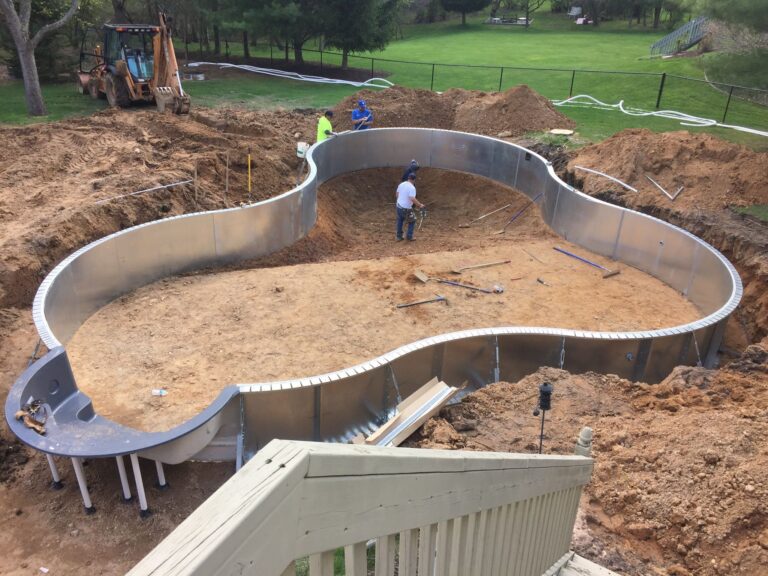7 Best AI Tools For Landscapers
Understanding AI in Landscaping
Artificial intelligence (AI) is rapidly transforming the landscaping industry, offering an advanced toolkit for both professionals and enthusiasts. AI in landscaping utilizes machine learning algorithms to enhance the precision and accuracy of garden and yard design, maintenance, and planning.
This technology can analyze vast amounts of data to predict how plants will grow over time, which helps in creating more sustainable and efficient spaces. AI technology also streamlines the selection of plants suited to specific environmental conditions and personal preferences.
AI tools in landscaping may include:
- 3D modeling software: Projects intricate garden layouts allowing for immersive previews.
- Plant recognition systems: Identify plant species and assess their health.
- Robotic mowers and sensors: Manage lawn care with minimal human intervention.
These systems rely on advanced algorithms which continually learn from new data, ensuring that AI-driven landscaping tools improve over time. By adopting this revolution in landscaping, they fine-tune tasks such as plant selection, watering schedules, and soil management with increasing precision.
The rise of AI in landscaping is not only about enhancing aesthetic appeal but also about fostering sustainability. It integrates machine learning insights to ensure that design choices contribute positively to the environment.
In summary, AI’s role in landscaping signals a shift towards more intelligent, efficient, and environment-friendly practices, underpinned by technological innovation and a commitment to continuous improvement.
Key Benefits of AI for Landscape Design
Artificial intelligence (AI) transforms landscape design by offering remarkable benefits. Efficiency in designing is substantially increased, as AI tools can automate tasks which typically require considerable time and effort.
AI-driven software aids in achieving time-saving by simplifying processes such as site analysis and design conceptualization. The accuracy and precision of AI tools ensure meticulous detail in designs, translating into well-executed landscapes.
The integration of AI encourages collaboration among team members. It simplifies sharing design data and 3D models real-time, fostering improved teamwork and decision-making processes.
Creativity also gets a significant boost with AI. Designers can experiment with countless scenarios in a fraction of the time it would take manually. These tools suggest options that might not have been initially considered, enhancing the creativity of designs.
| Benefits of AI | Description |
|---|---|
| Efficiency | Speeds up design tasks, reducing manual workload. |
| Time-saving | Decreases project timelines through fast computations. |
| Accuracy | Ensures precise measurements and data integration. |
| Precision | Delivers finely tuned design elements and details. |
| Collaboration | Enhances team interaction and the sharing of ideas. |
| Creativity | Encourages exploration of innovative design solutions. |
| Teamwork | Facilitates better communication and workflow among teams. |
Landscapers are gifted with a powerful ally in AI, empowering them to push conventional boundaries and design sustainably, effectively embracing the evolving needs of our environment.
AI Tools for Landscape Designers
With the advancement of technology, AI tools for landscape designers have become game-changers in the field, offering enhanced creativity, precise simulations, and improved collaboration. These tools range from artistic AI stylists that provide inspiration to sophisticated simulations for analyzing environmental factors.
AI Landscape Design Stylist
AI landscape design stylists facilitate the exploration of diverse styles and offer a wellspring of inspiration. They boast user-friendly interfaces that nurture creativity, allowing designers to tailor landscapes that resonate with clients’ visions.
AI Image Generators for Landscaping
AI image generators, like DreamzAR and Stable Diffusion, produce vivid images that serve as prototypes for potential landscaping projects. These tools can translate textual descriptions into compelling visuals, helping both designers and clients to visualize ideas before any physical work begins.
Garden Design with AI
AI playing a role in garden design results in data-driven plant selection and a consideration of environmental factors such as terrain, climate, and soil type. These smart systems simplify the complex decisions that come with creating harmonious and sustainable gardens.
AI-Driven Landscape Simulation Tools
Landscape simulation tools like Enscape harness virtual and augmented reality to create immersive environments. They show how atmospheric effects will interact with the landscape, providing a high level of accuracy in the planning phase.
AI Tools for Enhanced Collaboration and Customization
These tools offer robust collaboration features and customization options. They allow teams to work concurrently on designs, ensuring that personalization doesn’t compromise teamwork but instead elevates the collective output.
Database and Template Resources for Landscaping
Landscapers have access to comprehensive databases and templates containing a plethora of design elements, textures, and parameters. These resources help in quickly drafting designs that are both aesthetically pleasing and appropriate to the region’s climate.
Utility Apps for Landscapers
Mobile apps designed for landscapers take into account the specific elements of the region and climate they are working in. These apps become a handy reference for on-site work, allowing for quick adjustments to design concepts and elements based on live observations.
Landscape Project Management and AI
AI assists in landscape project management by automating iterative processes and optimizing workflow. This results in a more efficient progression from the conceptual stage to the final implementation, keeping projects on track and within budget.
AI and Environmental Considerations in Landscaping
AI tools can analyze environmental and climate data to suggest the best-suited vegetation types and design features. They help in creating landscapes that are not only beautiful but also ecologically responsible.
Integrating AI with Traditional Landscaping Techniques
The fusion of AI with traditional landscaping techniques leads to innovative designs that honor artistic styles while incorporating modern creativity. AI acts as an assistant to traditional craftsmanship, enhancing design styles without replacing the human touch.
Cost-Effectiveness of AI Landscaping Tools
AI landscaping tools are available at various price points, offering affordable solutions to both beginners and professional landscapers. The cost effectiveness of these tools lies in their ability to minimize manual labor and streamline the design process.
Navigating AI Tool Selection for Landscapers
For landscapers, the selection process for AI tools depends on the specific user requirements and software capabilities. It is critical to choose tools that align with their current tool compatibility and workflow.
AI and the Future of Landscape Design
The role of AI in the future of landscape design lies in its capacity for innovation and its potential to revolutionize the industry. AI is expected to continuously evolve, shaping new trends and techniques in landscape architecture.
Learning and Support for AI Landscaping Tools
AI landscaping tools are supported by a wealth of online resources, from educational materials to customer support and training programs. These resources provide essential knowledge to users, ensuring successful implementation of AI in their projects.
Ethics and Privacy in AI Landscaping
Ethical considerations and data privacy are paramount when using AI in landscaping. Tools must be designed to protect user data and respect privacy, maintaining trust and integrity in the landscape design process.
Real-World Applications and Case Studies
Case studies highlight the real-world applications of AI in landscaping, showcasing practical uses and success stories. These industry examples provide valuable insights and serve as a testament to AI’s impact on landscape design.
Overcoming Challenges with AI in Landscaping
Users must be adept at handling challenges and limitation handling when it comes to AI in landscaping. Problem-solving skills and a readiness to overcome adoption barriers are essential to fully leverage the benefits of AI tools in the field.
Frequently Asked Questions
Exploring the intersection of technology and landscape design, these frequently asked questions shed light on how AI is transforming the field for both professionals and novices.
Which AI-based software is preferred by professional landscapers for creating designs?
Professional landscapers often turn to AI-enabled tools like REImagine Home for its comprehensive landscaping features. It stands out for its project planning capabilities in both interior and garden design sectors.
How do AI tools for landscapers enhance project efficiency?
Leveraging AI in landscape design can increase efficiency by up to 40%, streamlining the creative process from conceptualization to visualization, thereby saving time and resources.
Can AI landscape tools accommodate different design styles?
Yes, AI landscape tools are equipped with versatile capabilities that can adapt to a wide array of design styles, ensuring designers can execute a diverse range of aesthetic and functional landscapes.
Are there AI landscaping programs that can predict plant growth over time?
Several AI landscaping programs include features that allow designers to visualize and predict plant growth over time, helping in long-term planning and maintenance scheduling.
What are the benefits of using AI in landscape architecture planning?
AI in landscape architecture planning introduces benefits like heightened innovation and sustainability, fostering more efficient and environmentally conscious designs that align with societal needs.
How user-friendly are the top AI tools for people new to landscape design?
The top AI tools for landscape design, such as Planner 5D, are designed with user-friendly interfaces and intuitive controls, making them accessible for beginners while also providing advanced features for experienced users.






